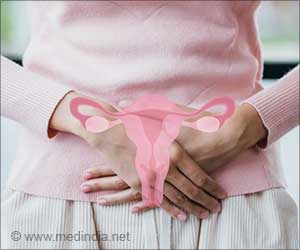When women at high risk for preterm birth participated in a preterm birth prevention clinic, more women delivered full term babies

"We wanted to take a very aggressive approach to treating women with a history of preterm birth,' said Sean Esplin, M.D., of Intermountain Healthcare and one of the studies authors. "We gathered together the best treatments for women at high risk for preterm labor and administered them in a systematic way." He continued, "Then we designed a study to see if the intervention leads to better results in future pregnancies."
Esplin and his colleagues conducted a retrospective review of women with a single, non-anomalous fetus and ≥1 documented previous spontaneous PTB < 35 wks. Women enrolled in a PTB Prevention Clinic were compared with women identified from a contemporary large perinatal database (with ≥ 1 documented PTB < 35 wks followed by ≥ 1 subsequent pregnancies) who received Usual-Care. The PTB Prevention Clinic was consultative only and included three prescribed visits with a maternal fetal-medicine specialist and standardized management and counseling. All PTB Prevention Clinic patients were offered 17 alpha-hydroxyprogesterone caproate (17OHPC) and were followed with serial cervical-lengths (CL); recommendations for liberal antenatal corticosteroid and tocolytic use were also made. Usual-Care patients were managed by their primary obstetrician. The primary outcome was recurrent PTB. Data were analyzed by chi-square and Student's t-test.
Two hundred and thirty-two patients (70 PTB Prevention Clinic and 162 Usual-Care patients) met inclusion criteria. Groups had similar previous pregnancy characteristics. PTB Prevention Clinic patients had increased utilization of resources (including more cervical length ultrasounds and higher rates of use of prophylactic 17OHPC) and delivered at later gestational ages. Rates of NICU admission were similar between groups (44.3% vs. 40.7%, p=0.62). However, rates of major neonatal morbidity (diagnosis of NEC, BPD, IVH, sepsis, or death) were lower among PTB Prevention Clinic neonates (5.3% vs. 15.4%, p=0.025).
The study showed that among this high-risk population, referral to a consultative PTB Prevention Clinic (with standardized counseling, management recommendations, and close surveillance) resulted in a reduction in the rate of recurrent PTB prior to 37 weeks, lead to an average of a one week longer pregnancy, and reduced the rates of major neonatal morbidity.
"The study showed that participants in the preterm birth prevention clinic had a 28 percent reduction in the risk of recurrent spontaneous preterm birth, as well as reductions in infant complications and short term disabilities," said Tracy Manuck, M.D., one of the study's authors. "These are significant improvements and should lead more medical facilities to think about creating similar programs."
Advertisement
Source-Eurekalert











